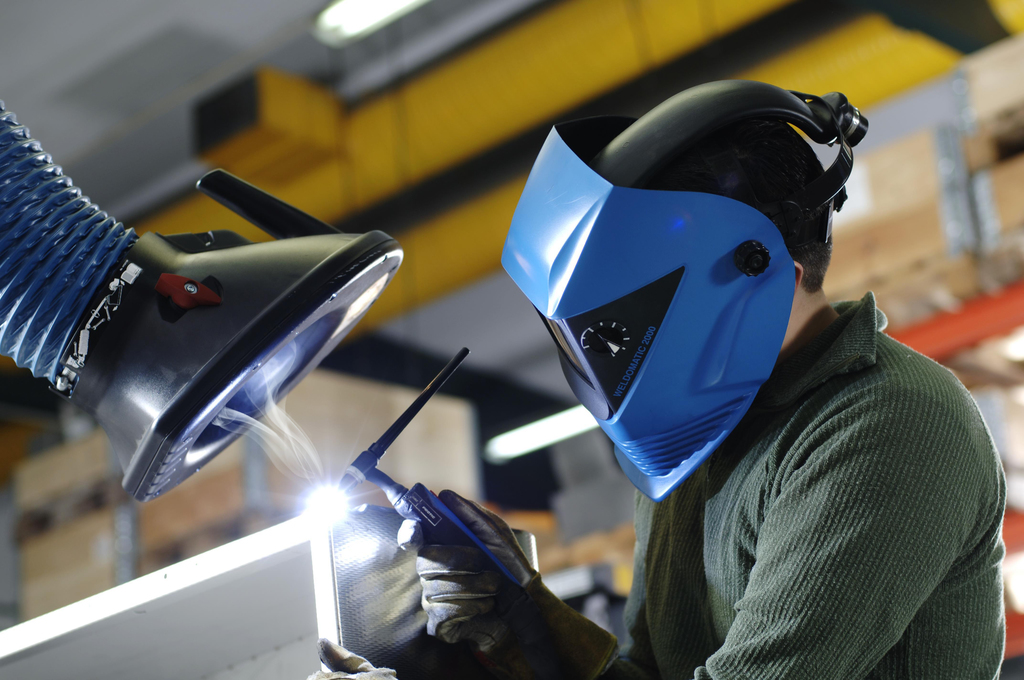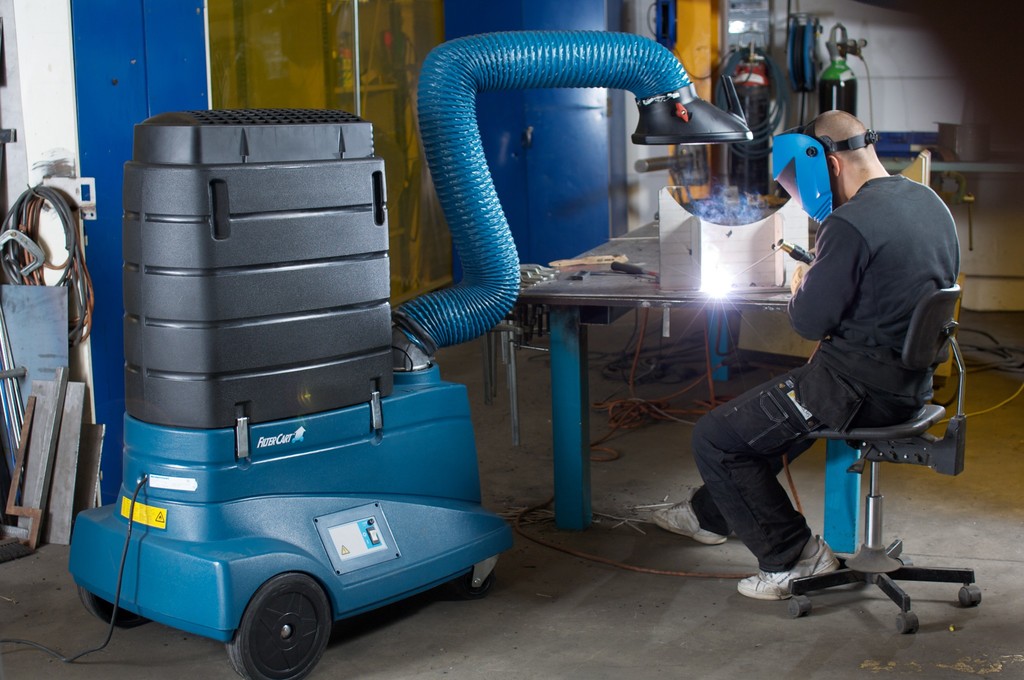
Kelly Rose
Editor

Kelly Rose
Editor
HSM asks Daniel Frith about the dangers of exposure to airborne contaminants and how to mitigate the risks.
How can workers be exposed to airborne contaminants?
Daniel Frith: Airborne contaminants can occur from a variety of outputs depending on the occupational setting via substances such as dust, gases, fumes, mists, or vapours present in the air. As a result, some industries are more susceptible to the presence of harmful substances such as construction, manufacturing, and mining. Manufacturing roles such as brick and tile manufacture, ceramics and stone working and foundry work are particularly prone to harmful effects. Even dusts created by foodstuffs that we consider to be safe can be hazardous, if there is continuous exposure. Output is often invisible to the naked eye, and workers are not aware that they are exposed.
What are the dangers of being exposed to these kinds of hazardous substances?
Daniel Frith: Every year, thousands of workers in the UK experience damaging lung-related effects from airborne contaminants such as lung cancer, asthma or lung scarring because of airborne contaminants they have breathed in at work. In 2022, there was an estimated 19,000 new cases of breathing or lung problems made worse by work, according to the HSE. The severity of harmful effects will ultimately depend on duration, frequency and degree of exposure to the substances.
Is it difficult to control exposure to airborne contaminants?
Daniel Frith: As a result of the variety of airborne contaminant transmission and the often-imperceptible output, the HSE has identified a concerning trend: that employers are often unaware that their workers are being exposed to hazardous substances or that their existing controls may be insufficient. This lack of awareness gives rise to several issues including the sources of exposure being missed, the deterioration of existing controls and incorrect utilisation of the implemented safeguards.
What is the law on protecting workers from harmful exposure?
Daniel Frith: The UK has a strong framework and reputation when it comes to health and safety and the approach towards airborne contaminants is no exception. The primary legislation that addresses harmful airborne contaminants in the workplace is the Control of Substances Hazardous to Health Regulations (COSHH) which outlines that employers have a legal duty to access risks associated with hazardous substances and make decisions on what measures to use to protect the health of their employees. It is important that employers are engaged with airborne hazard safety not only for the health of their employees but to also avoid enforcement action.
What do employers need to do to eliminate the risk and protect workers?
Daniel Frith: Employers can use the Hierarchy of Control as a way to determine which actions are most necessary to control hazards in the workplace. The first level of control is the elimination of the hazard entirely - removing a toxic chemical for example. The second level is substitution and involves offering a safer alternative to the hazardous substance. The first two actions can be the most difficult to adopt for reasons such as cost and design and so the third level - local exhaust ventilation systems (LEV) - is the level of control used most often. The use of LEV isolates workers from the hazard by removing the substance at the source. The fourth level is administrative controls such as reducing the frequency of exposure to hazards. The fifth and final level is the use of personal protection equipment (PPE) such as gloves and masks to minimise exposure to hazards. Levels four and five are useful actions but should be combined with other control methods to offer the most protection.
What makes up an LEV system?
Daniel Frith: Depending on the application and the hazardous substance that needs extracting, there are several types and sizes of LEV systems available:
Portable units: These are designed to be carried to the work area for direct on-tool extraction use with a welding torch, tools, or equipment.
Extraction arms: This is the most recognisable type of LEV, which is often connected to a fixed vacuum filter system but are also available as portable units to move easily around the workplace.
Downdraft filter bench: This system works at a fixed dedicated point for repetitive work.
Large custom-made built-in fixed collection systems: These are designed for specific workplaces where a more extensive and customised solution is required.
A typical LEV system will have a hood(s) to collect airborne contaminants at, or near, where they are created (the source), ducts to carry airborne contaminants away from the process, a filter to clean the extracted air and a fan which must be the right size and type to deliver sufficient air flow from the hood. The clean air is then discharged safely back into the atmosphere, or some systems may have a collection bin to collect dusts and solids that are dislodged from the filter.
How do you select the right type of LEV?
Daniel Frith: Buying the right type of LEV equipment is a critical step. It’s important to match the hood to the source that you want to control. There may be a standard ‘off-the-shelf’ system that would be suitable, however it should be fit for purpose and capable of adequately controlling exposure. We partner with leading LEV manufacturers and highly qualified LEV installation teams to ensure that our LEV equipment is compliant with COSHH regulations and HSE guidelines. Through our site surveys, we ensure you buy the right type of LEV equipment for your business and application needs.
What is the process for installing LEV into the workplace?
Daniel Frith: There is a systematic approach to installing LEV in the workplace to make sure that it is fit for purpose and effective. All LEV systems must comply with the Health and Safety at Work Act 1974 (HSWA) and the Control of Substances Hazardous to Health Regulations 2002 (COSHH). You must manage LEV risk assessment properly; it is advisable that you engage with an expert throughout this process so that the most suitable methods are chosen - installing an ineffective system can be very costly.
We can offer risk assessment guidance and support to help you to identify workplace hazards and implement practical measures to eliminate or reduce them. Without air monitoring, it is impossible to understand how much contaminants are in the air. Arco can provide workplace air monitoring to help identify hazardous substances, evaluate the usage risks, determine the required control measures and ensure that they are working effectively.
How often do LEV systems need to be monitored and checked?
Daniel Frith: Regular inspections of LEV systems should take place to ensure the smooth running of the device. A Periodic Test Examination (TExT) should be conducted at least every 14 months with records kept for at least five years. Depending on the age of the system, the amount of wear and tear and whether there have been any changes to the system or processes, more frequent testing may be needed. Additionally, there are certain specified processes requiring even more frequent testing of associated LEV (COSHH Regulations Schedule 4). Business owners should work with an expert safety partner to ensure systems are compliant.
What does a TExT involve?
Daniel Frith: TExT involves a detailed and systematic examination to assess that the LEV system is performing as it is intended and contributing to adequate control measures. The examination and test will compare the system against the performance record in the commissioning report. The TExT will be undertaken, in accordance with HSG258, by a competent examiner who has the correct knowledge, skills and practical experience and this will be conducted on your site. They will collect information such as airflow, the condition of the system, hood type and position relative to the contaminants, static pressures and visual indications to capture efficiency. All information will be compiled into a report to advise you on your current level of compliance and offer recommendations for improvement. The detailed report should be kept for the lifespan of the LEV system. At Arco, we have a dedicated team with the knowledge and experience to conduct a 14-monthly TExT Report to ensure you remain compliant to COSHH Regulations and to ensure that your equipment is in good working order and is providing the necessary protection.
Does Arco provide any further support?
Daniel Frith: Arco Professional Safety Services offers comprehensive air monitoring services to identify airborne hazards in your workplace. Our expert team can assist you in selecting the appropriate control measures to ensure their effective implementation and protect the health of everyone involved. At Arco, we have a dedicated customer support team who are always on hand to provide comprehensive support and advice throughout the UK.
To read more on LEV, please visit Arco’s advice page: www.arco.co.uk/expert-advice/hose/LEV
Daniel Frith is operations manager at Arco. For more information, visit www.arco.co.uk.




P O Box 21
Waverley Street
Hull
HU1 2SJ
UNITED KINGDOM
01482 327678